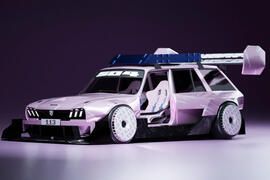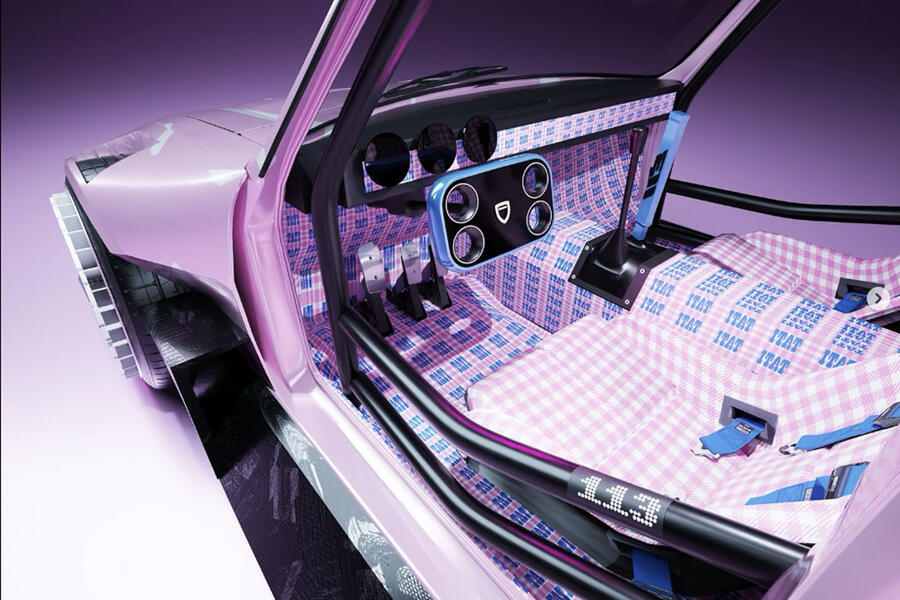
The Peugeot 504 Break was introduced in 1970 and could be had with seven seatsBrand’s in-house design studio presents three radical takes on the 1970s family estate
The Peugeot Design Lab has given a 504 Break the Pikes Peak treatment as part of a series of radical reimaginings of the classic estate.
Among the changes made to the 504 are the fitment of wide box arches, a whopping rear spoiler and even the removal of the front doors.
The headlights have been replaced with LEDs arranged in the same ‘lion’s claw’ motif as on the current 508 estate and it wears the modern Peugeot emblem.
The wheel arches, meanwhile, have been opened up to expose the tops of the tyres, which encircle turbofan-style wheels.
The ‘113’ script on the wheels references a French rap group of that name, who drove a 504 Break onto the stage of the nation’s music awards in 2000.
At the rear end, the Pikes Peak 504 wears a chunky, forged-carbonfibre diffuser, further emphasising the concept’s high-performance billing.
Inside, it gets a set of chequered pink-and-white seats to match the exterior livery as well as the Hypersquare steering wheel that’s set to feature in Peugeot’s next-generation road cars. The rear seats have been removed, replaced with a roll cage.
Peugeot hasn't detailed the car’s prospective performance modifications but described it as “a crazy boosted one”, hinting at the installation of a turbocharger.

The similarly conceived Subaru GL Family Huckster seen at the Goodwood Festival of Speed packs a turbocharged four that delivers 862bhp to all four wheels through a sequential six-speed gearbox.
Peugeot has also shown an example of an earlier 504 Break fettled to become a drift car packaging a hydraulic handbrake and a similar – but less aggressive – suite of modifications.
The final concept in the trio is a lowrider that retains the original grille and coachwork but adds yellow-tinted windows and an asymmetrical colour scheme.
The unveiling of the three fettled 504s comes after new Peugeot CEO Alain Favey expressed his desire to “connect the brand with what it stands for to its past, to its heritage in every sense”.
Favey added: “We will look back at what the heritage of the brand is and we will see to what extent this can be adapted to the modern world – and there is nothing excluded in our review of this.”